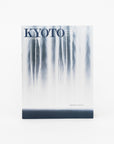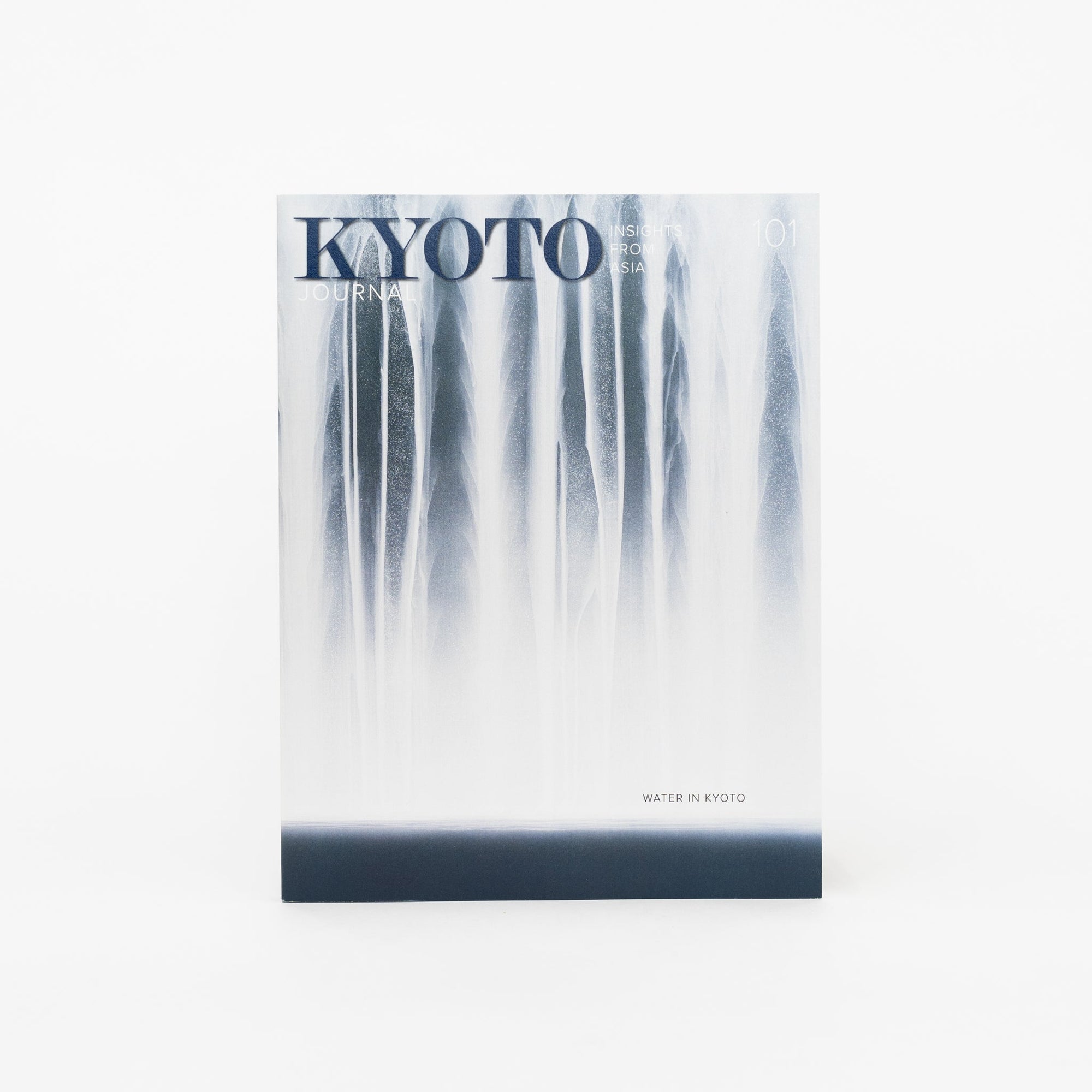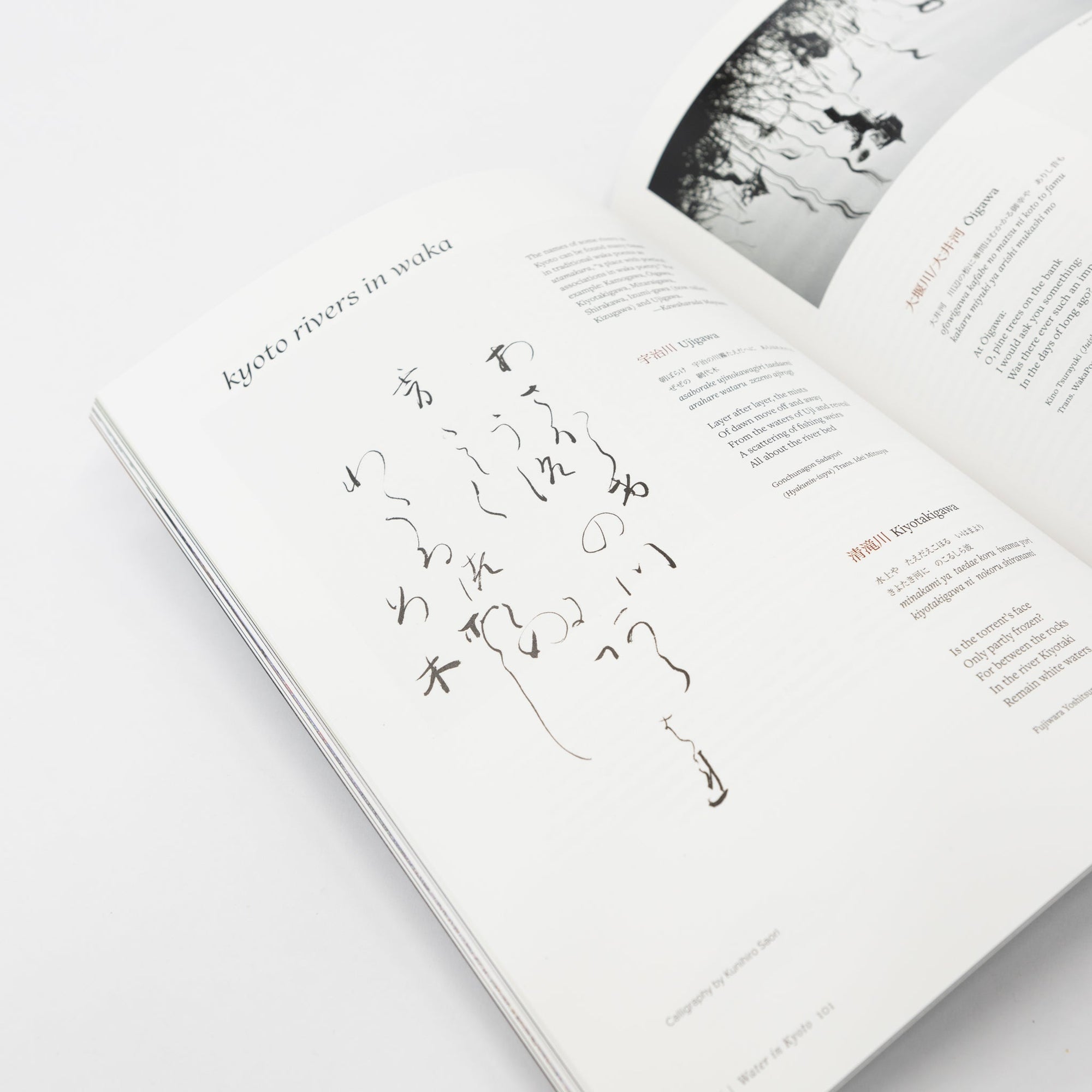

Kyoto Journal 101: "Water In Kyoto"
$40.00
Description:
This issue of Kyoto Journal, Water in Kyoto, explores the pervasive influence of water across Kyoto’s unique cultural landscapes. It highlights water’s physical presence in essential traditions such as sake brewing, tofu-making, tea ceremonies, dyeing, public bathhouses, and diverse garden designs. Beyond the tangible, water also holds deep symbolic significance in religious rituals, graphic arts, painting, and the poetry of waka and haiku. It shapes the character of each season, serving as a source of inspiration for artists and photographers throughout history.
Supported by spectacular imagery, KJ101 presents enlightening interviews with eminent artist Hiroshi Senju, whose mighty waterfall graces the cover; Kyoto photographer (and 16th-generation soba restauranteur) Ariko Inaoka; the world-renowned musician Stomu Yamash’ta; artist Niwa Yuta, exploring myths of Kyoto’s mysterious colossal salamander; and Chinese/Japanese photographic duo RongRong and Inri, who now reside in Kyoto.
Also examined, Kyoto garden experts Gunter Nitschke, Marc Peter Keane and Stephen Mansfield, Buddhist scholar Catherine Ludvik, meditative walker Edward J. Taylor, Kamogawa strolling path designer Yamada Akihiro, and many more writers with carefully-examined water-based insights. Meanwhile, looking to the future, long-standing Shiga resident and artist Brian Williams analyzes the global warming threat to Lake Biwa, Kyoto’s primary source of drinking water, and environmental researcher Nagano Takanori alerts of a new Shinkansen tunnel threatening Kyoto’s precious ground-water.
Measurements:
128 pages
History:
Founded (1987) in a city with rich culture and customs, Kyoto Journal aims to explore, celebrate, and spread the traditional and contemporary life of Japan with an Asian-wide perspective. As a Japanese non-profit organization and an all-volunteer based publication, Kyoto Journal has attracted a wide diversity of devoted and engaged contributors. Coming from a place of respect and reverence for the Asian community, Kyoto Journal’s goals are for excellence in writing, art, design, and photography. Kyoto Journal currently publishes one print magazine/book as well as two digital magazine issues per year. The engaging and stimulating themes inside Kyoto Journal maintain an unlimited shelf-life and can be enjoyed for years to come.
This issue of Kyoto Journal, Water in Kyoto, explores the pervasive influence of water across Kyoto’s unique cultural landscapes. It highlights water’s physical presence in essential traditions such as sake brewing, tofu-making, tea ceremonies, dyeing, public bathhouses, and diverse garden designs. Beyond the tangible, water also holds deep symbolic significance in religious rituals, graphic arts, painting, and the poetry of waka and haiku. It shapes the character of each season, serving as a source of inspiration for artists and photographers throughout history.
Supported by spectacular imagery, KJ101 presents enlightening interviews with eminent artist Hiroshi Senju, whose mighty waterfall graces the cover; Kyoto photographer (and 16th-generation soba restauranteur) Ariko Inaoka; the world-renowned musician Stomu Yamash’ta; artist Niwa Yuta, exploring myths of Kyoto’s mysterious colossal salamander; and Chinese/Japanese photographic duo RongRong and Inri, who now reside in Kyoto.
Also examined, Kyoto garden experts Gunter Nitschke, Marc Peter Keane and Stephen Mansfield, Buddhist scholar Catherine Ludvik, meditative walker Edward J. Taylor, Kamogawa strolling path designer Yamada Akihiro, and many more writers with carefully-examined water-based insights. Meanwhile, looking to the future, long-standing Shiga resident and artist Brian Williams analyzes the global warming threat to Lake Biwa, Kyoto’s primary source of drinking water, and environmental researcher Nagano Takanori alerts of a new Shinkansen tunnel threatening Kyoto’s precious ground-water.
Measurements:
128 pages
History:
Founded (1987) in a city with rich culture and customs, Kyoto Journal aims to explore, celebrate, and spread the traditional and contemporary life of Japan with an Asian-wide perspective. As a Japanese non-profit organization and an all-volunteer based publication, Kyoto Journal has attracted a wide diversity of devoted and engaged contributors. Coming from a place of respect and reverence for the Asian community, Kyoto Journal’s goals are for excellence in writing, art, design, and photography. Kyoto Journal currently publishes one print magazine/book as well as two digital magazine issues per year. The engaging and stimulating themes inside Kyoto Journal maintain an unlimited shelf-life and can be enjoyed for years to come.
Materials:
Magazine
Magazine
All books are final sale.


